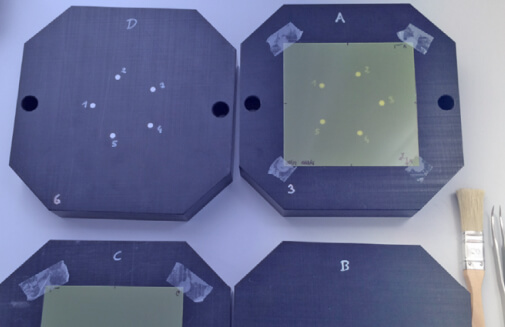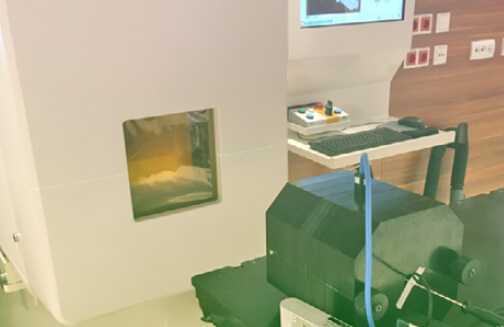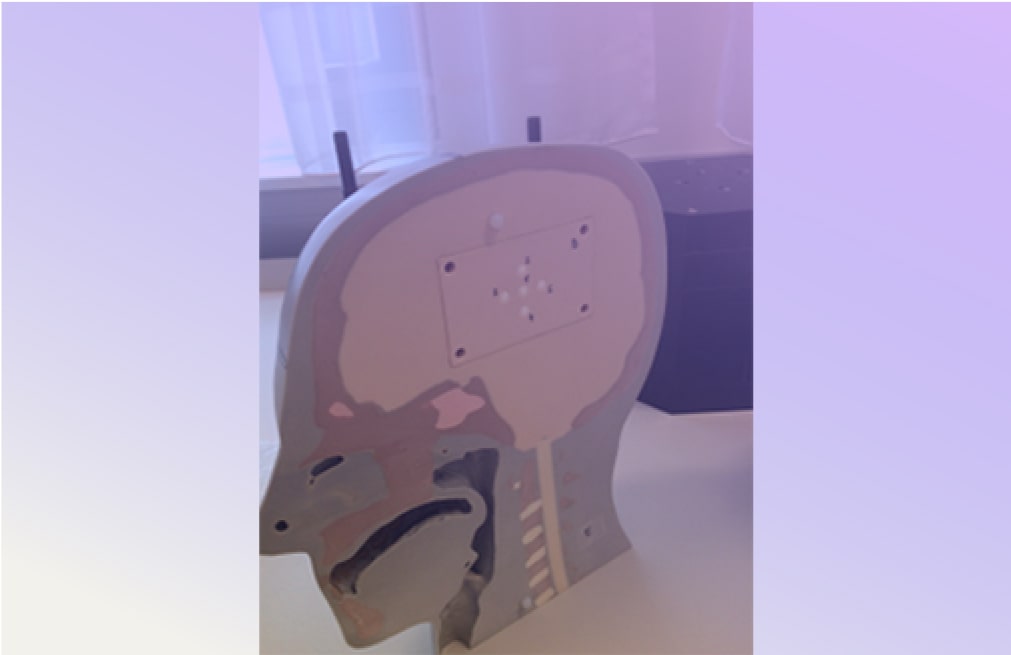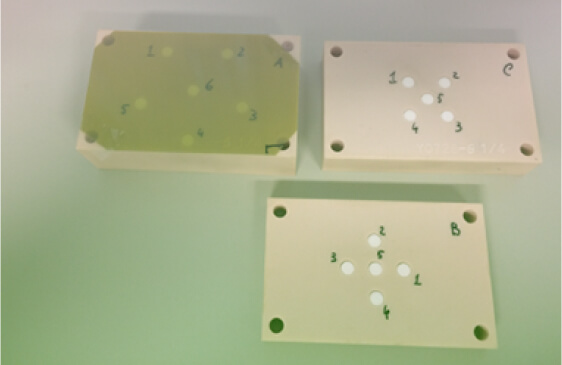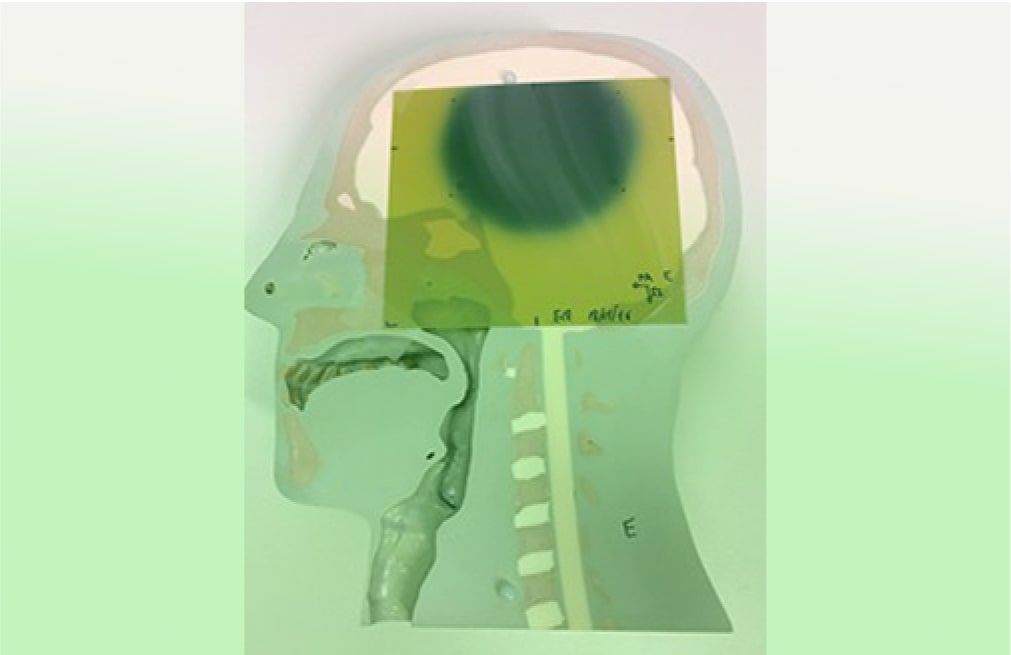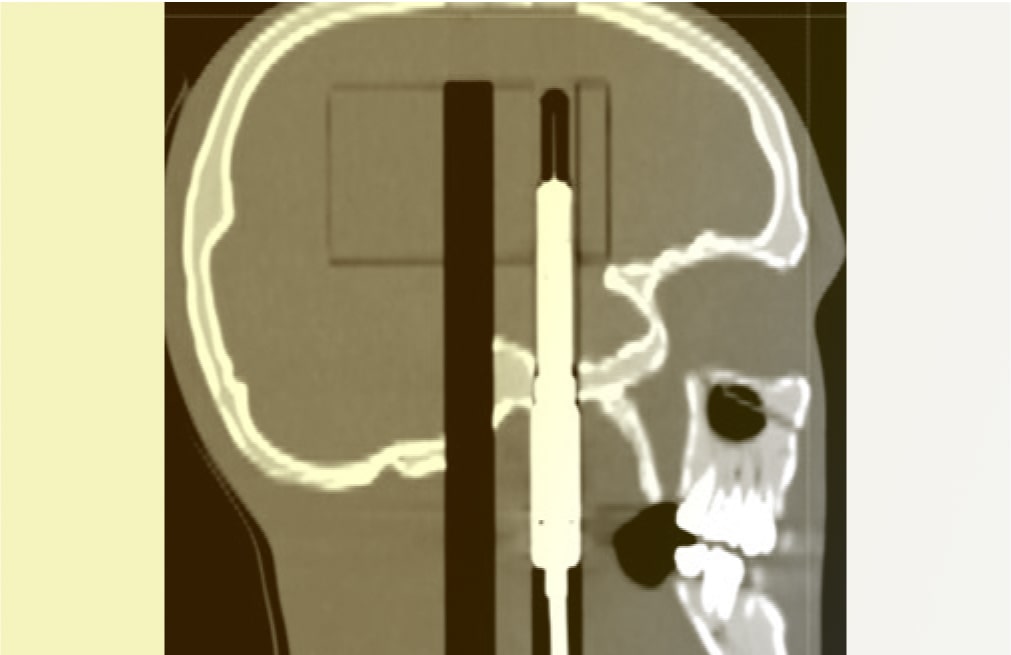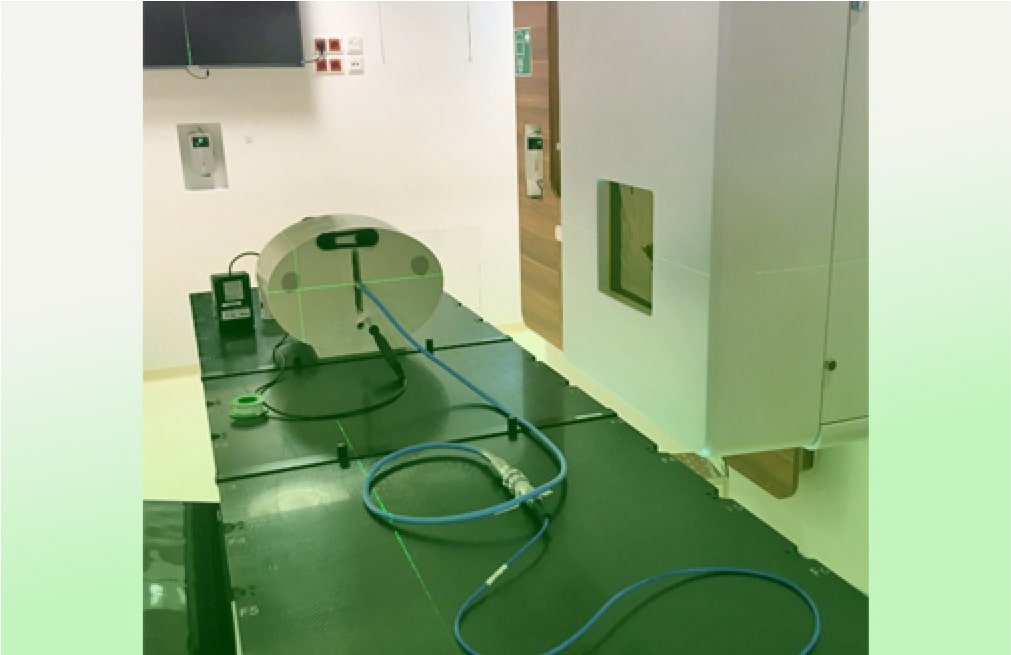Detectors
The following detectors are used for dosimetric audit based on end-to-end test (E2E) at proton PBS facilities:
Alanine
The alanine pellets that are used for the determination of the delivered doses in homogeneous and anthropomorphic phantoms are provided by the National Physical Laboratory (NPL), Teddington, UK. The pellets irradiated during the audit are read out using Electron Paramagnetic Resonance (EPR) by the NPL Chemical Dosimetry group and a report is provided to the auditors with the results. The following characteristics of alanine detectors can be emphasized:
1.
Alanine is nearly water equivalent in terms of stopping power and density (pellet densities actually close to PMMA)
2.
Alanine is an integrating dosimeter with very stable post-irradiation signal and no destructive readout making it suitable as an archiving dosimeter
3.
There is no dose rate dependence until extremely high dose rates making it very suitable for scanning beams with high instantaneous dose per pulse.
4.
Similar to other solid-state detectors there is also an LET and energy dependence (quenching effect) which can be corrected for (Carlino et al, 2018). Compared to other solid-state detectors alanine allows for a simpler modeling of the quenching.
5.
Similar to other solid-state detectors there is also an LET and energy dependence (quenching effect) which can be corrected for (Carlino et al, 2018). Compared to other solid-state detectors alanine allows for a simpler modeling of the quenching.
Farmer ionzation champer
A Farmer ionization chamber (PTW-TM30013) coupled with a Unidoswebline electrometer is calibrated in terms of absorbed dose to water in a 60Co reference beam at NPL (UK). The absorbed dose to water in a proton beam is derived using the formalism and beam quality correction factors from the IAEA TRS-398 code of practice.
EBT3 radiochromic films
EBT3 radiochromic films are employed only for relative dosimetry to provide additional two-dimensional dose distribution information.

